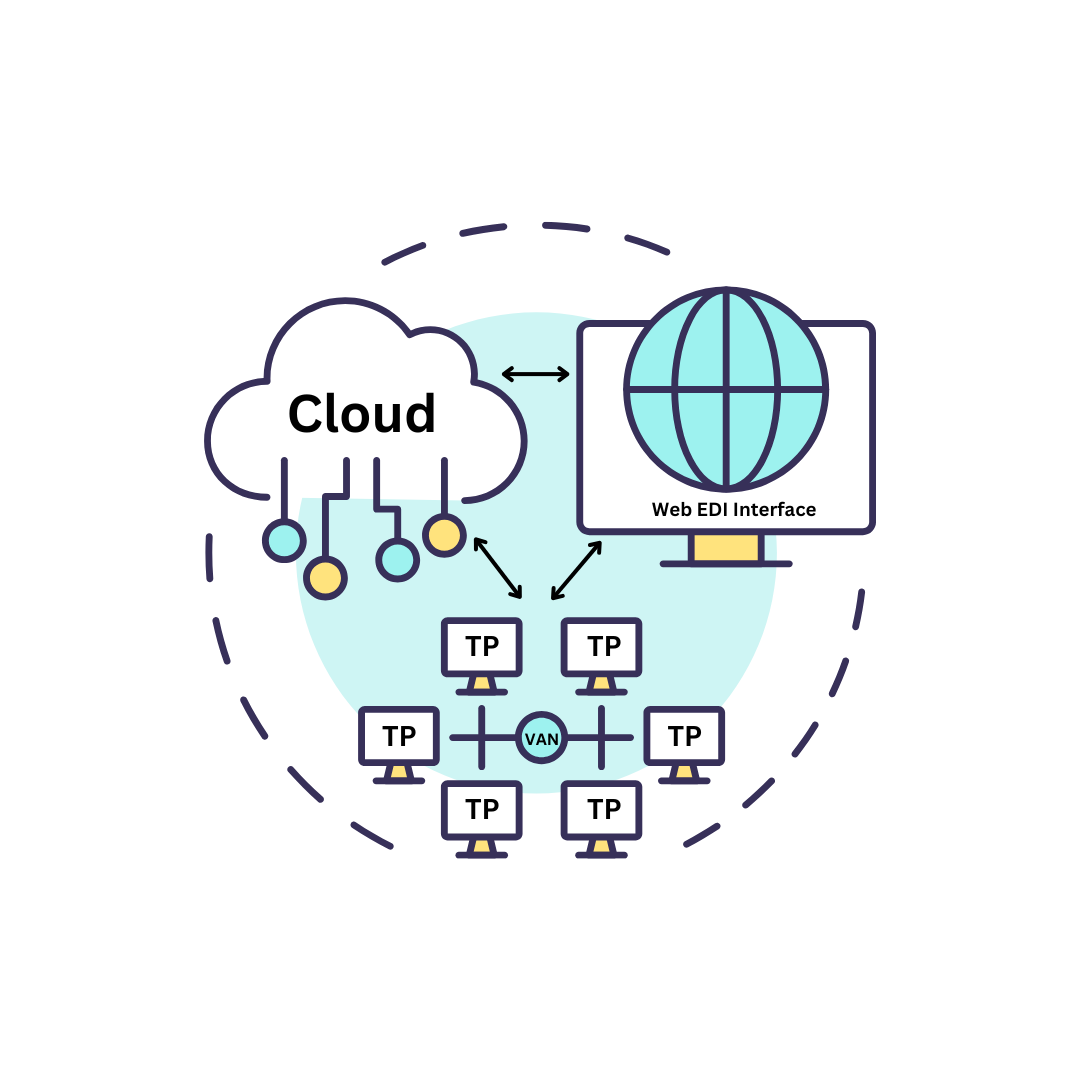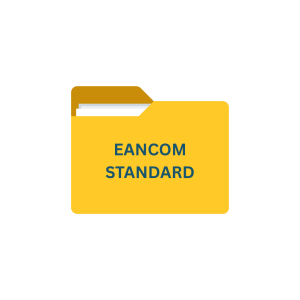Introduction
Since the 1970s, Electronic Data Interchange (EDI) and Value-Added Networks (VANs) have revolutionized how companies exchange information, automate processes, and collaborate with partners, ultimately driving efficiency and reducing costs.
EDI and VAN are essential for businesses aiming to optimize their operations and enhance their supply chain management. However, it’s important to recognize that implementing and maintaining effective EDI and VAN systems requires ongoing commitment, investment, and adaptation.
Organizations must stay informed about technological advancements, industry standards, and changing business needs to ensure their EDI strategies align with their overall business objectives.
Key Takeaways
- The enduring relevance of EDI in facilitating standardized, automated business communications
- The critical role of VANs in providing secure, reliable platforms for EDI transactions
- The substantial benefits of implementing EDI and VAN solutions, including improved operational efficiency, cost reduction, and enhanced supply chain visibility
- The challenges associated with EDI and VAN implementation and strategies to overcome them
- Best practices for successful EDI and VAN deployment and management
- Emerging trends shaping the future of EDI and VAN technologies
Understanding EDI and VAN
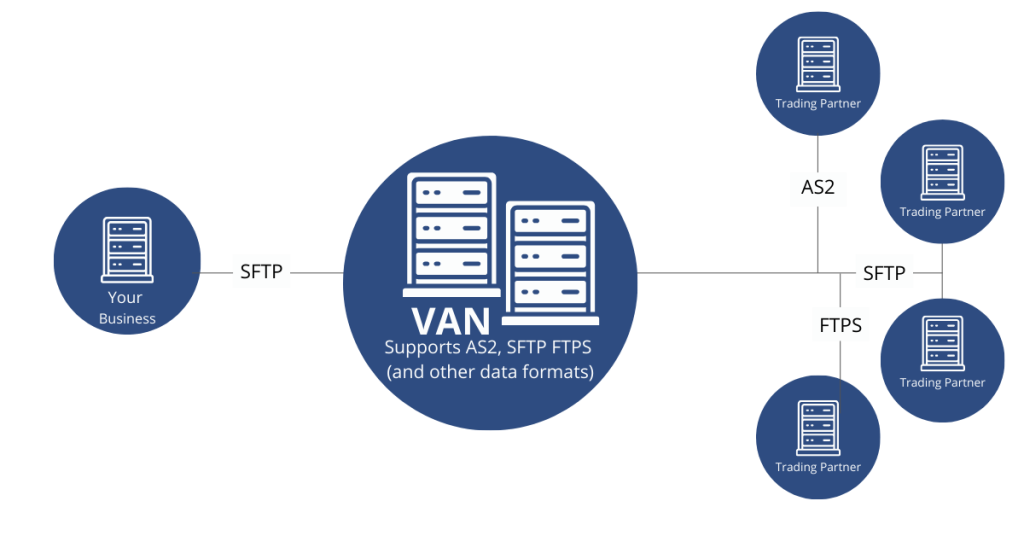
What is EDI?
Electronic Data Interchange, known as EDI, is the backbone of modern business-to-business communication. This technology enables companies to exchange standardized business documents electronically, eliminating the need for paper-based processes and manual data entry. By facilitating the seamless transfer of information between trading partners, EDI has become an indispensable tool for organizations seeking to streamline their operations and enhance their competitive edge.
The beauty of EDI lies in its ability to automate routine business transactions, reducing errors and accelerating the flow of information throughout the supply chain.
EDI encompasses a wide range of business documents, including but not limited to:
- Purchase orders
- Invoices
- Shipping notices
- Inventory reports
- Payment instructions
By digitizing these documents and enabling their automatic processing, EDI significantly reduces the time and resources required for routine business operations. This efficiency translates into tangible benefits for organizations, such as reduced operational costs, improved accuracy, and faster transaction cycles.
The Role of Value Added Networks (VANs) in EDI
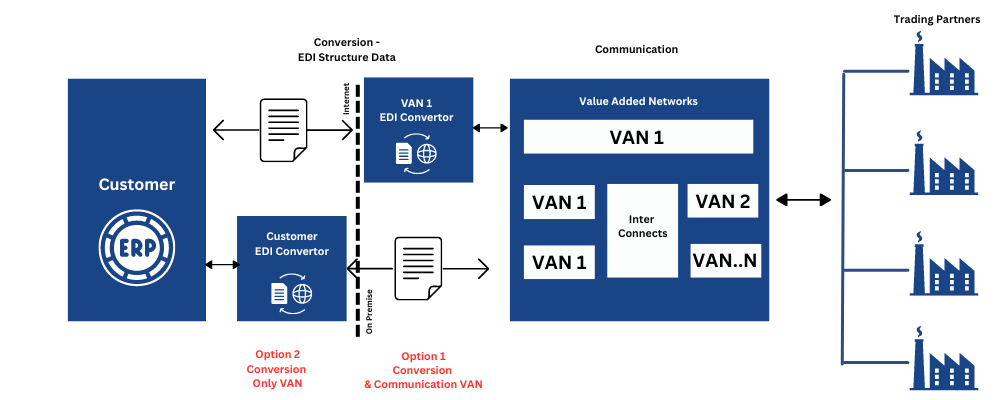
What is a Value-Added Network?
A Value-Added Network is a private, secure network that facilitates the exchange of EDI documents between trading partners. It serves as a central hub, managing the flow of information and ensuring that documents are delivered accurately and securely to the intended recipients.
Key features of VANs include:
- Secure transmission: VANs employ encryption and other security measures to protect sensitive business data.
- Protocol conversion: They can translate between different EDI standards and protocols, enabling communication between disparate systems.
- Store-and-forward capability: Documents can be stored temporarily, ensuring delivery even if the recipient’s system is temporarily unavailable.
- Tracking and reporting: VANs provide detailed audit trails and reporting features for transaction monitoring.
How VANs Enhance EDI Processes
VANs offer several advantages that enhance the efficiency and reliability of EDI transactions:
- Simplified connectivity: Instead of maintaining individual connections with each trading partner, companies can connect to a single VAN that handles all communications.
- Improved security: VANs provide robust security measures, including encryption and authentication, to protect sensitive business data.
- Protocol and format translation: VANs can convert documents between different EDI standards and formats, enabling seamless communication between partners using different systems.
- Reliability and availability: With redundant systems and 24/7 monitoring, VANs ensure high uptime and reliable document delivery.
- Scalability: As businesses grow and add new trading partners, VANs can easily accommodate increased transaction volumes without significant infrastructure changes.
Types of VAN Services
VANs offer various services to support EDI operations:
- Basic EDI transmission: Secure transfer of EDI documents between trading partners.
- Data transformation: Converting documents between different EDI standards or formats.
- Trading partner management: Onboarding and managing connections with multiple trading partners.
- Compliance checking: Ensuring that documents meet required standards and regulations.
- Reporting and analytics: Providing insights into transaction volumes, patterns, and performance metrics.
How EDI and VAN Work Together
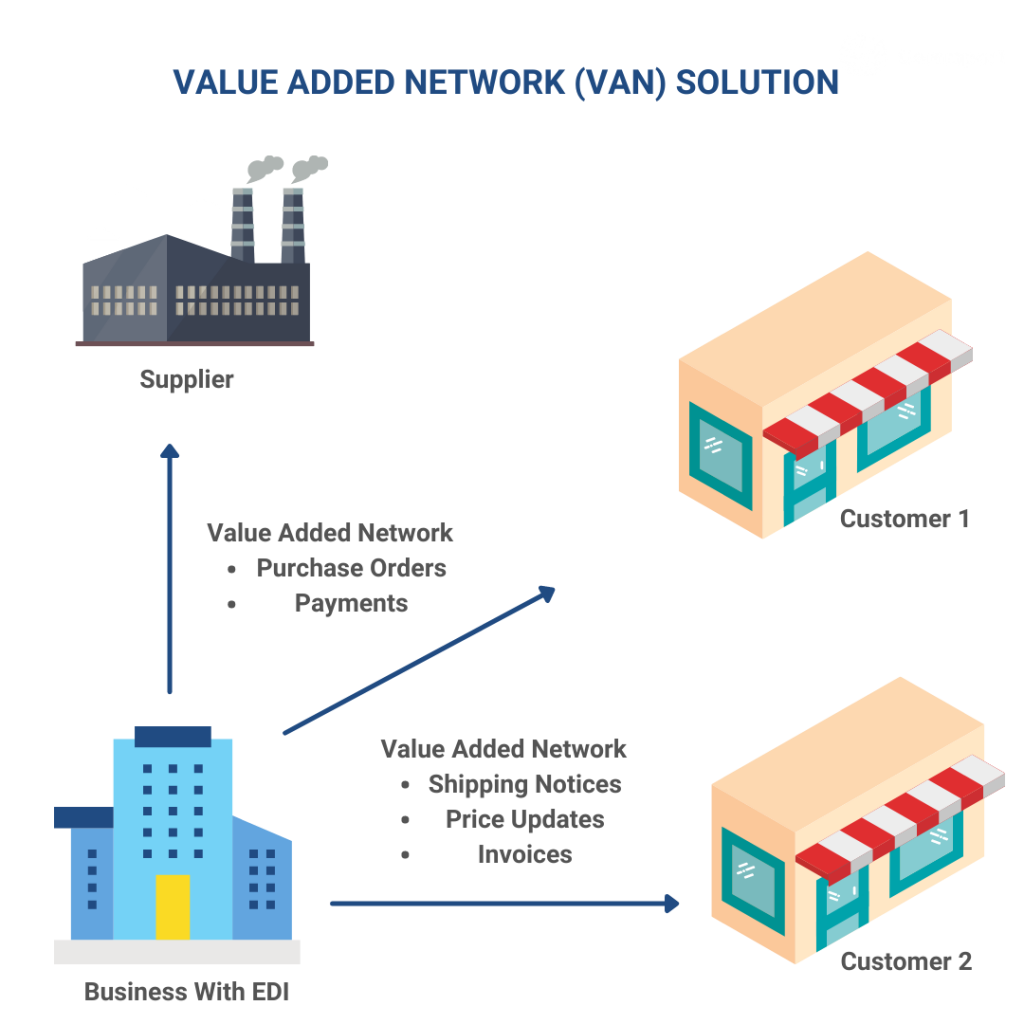
When businesses integrate EDI with a VAN, the entire process of exchanging documents becomes seamless and automated. Here’s how they work together:
- Document Creation: The business generates an electronic document (e.g., invoice, purchase order) using an ERP system or EDI software.
- EDI Translation: The document is converted into an EDI format (e.g., X12, EDIFACT).
- Transmission via VAN: The translated document is securely sent through the VAN to the intended recipient.
- Data Validation & Security Checks: The VAN verifies the document’s integrity and ensures security compliance.
- Recipient Processing: The recipient’s system receives, translates, and processes the document automatically.
- Acknowledgment & Response: The recipient may send an acknowledgment (997 functional acknowledgment in X12), confirming successful receipt.
How to Get Started With EDI and VAN Implementation
Implementing Electronic Data Interchange (EDI) and Value-Added Network (VAN) solutions requires careful planning and execution to ensure success. By following best practices, organizations can maximize the benefits of these technologies while minimizing potential pitfalls. Here are key strategies and recommendations for effective EDI and VAN implementation:
- Conduct a Thorough Needs Assessment
Before embarking on EDI and VAN implementation, it’s crucial to understand your organization’s specific needs and goals:
- Identify key business processes that could benefit from EDI automation
- Assess current transaction volumes and projected growth
- Evaluate existing systems and integration requirements
- Determine compliance and security needs
- Develop a Comprehensive Implementation Strategy
Create a detailed plan that outlines the steps, timelines, and resources required for implementation:
- Set clear objectives and key performance indicators (KPIs)
- Define project phases and milestones
- Allocate necessary resources, including budget and personnel
- Establish a realistic timeline for implementation and rollout,
- Choose the Right EDI and VAN Solutions
Selecting appropriate technologies is critical for long-term success:
- Evaluate multiple vendors and solutions based on your specific needs
- Consider factors such as scalability, integration capabilities, and support options
- Assess the total cost of ownership, including implementation, maintenance, and transaction fees
- Look for solutions that offer flexibility and support for multiple EDI standards
- Prioritize Integration and Interoperability
Ensure seamless integration between EDI systems and existing business applications:
- Map out integration points with ERP, CRM, and other critical systems
- Choose EDI solutions with pre-built connectors or robust APIs
- Consider middleware solutions to facilitate complex integrations
- Test integrations thoroughly before going live
- Implement Robust Security Measures
Protecting sensitive business data is paramount in EDI and VAN implementations:
- Implement strong encryption for data in transit and at rest
- Use secure protocols for data transmission (e.g., AS2, SFTP)
- Establish strict access controls and user authentication processes
- Regularly audit and update security measures
- Develop a Structured Trading Partner Onboarding Process
Efficiently onboarding trading partners is crucial for EDI success:
- Create clear documentation and guidelines for partner onboarding
- Offer multiple connectivity options to accommodate various partner capabilities
- Provide training and support resources for partners
- Implement a testing and validation process for new connections
- Establish Clear Data Standards and Protocols
Consistency in data formatting and exchange is essential for smooth EDI operations:
- Define clear data standards and formats for all EDI transactions
- Establish protocols for handling exceptions and errors
- Implement data validation checks at multiple points in the EDI process
- Regularly review and update data standards as needed
- Invest in Training and Change Management
Ensure that your team is prepared to work with new EDI and VAN systems:
- Provide comprehensive training for staff on new processes and technologies
- Develop clear documentation and user guides
- Implement a change management strategy to address potential resistance
- Offer ongoing support and resources for users
- Implement Proactive Monitoring and Maintenance
Establish processes for ongoing system monitoring and maintenance:
- Set up automated alerts for system issues or transaction errors
- Regularly review system performance and transaction logs
- Schedule routine maintenance and updates
- Establish a dedicated support team or partner with a managed services provider
- Continuously Optimize and Improve
View EDI and VAN implementation as an ongoing process of improvement:
- Regularly assess system performance against established KPIs
- Solicit feedback from users and trading partners
- Stay informed about new EDI technologies and standards
- Continuously look for opportunities to expand EDI usage and automation
- Ensure Compliance and Documentation
Maintain compliance with industry regulations and standards:
- Stay informed about relevant compliance requirements (e.g., PCI-DSS)
- Implement necessary controls and documentation processes
- Conduct regular compliance audits
- Maintain detailed records of all EDI transactions and system changes
- Plan for Scalability and Future Growth
Ensure that your EDI and VAN solutions can grow with your business:
- Choose scalable solutions that can handle increasing transaction volumes
- Regularly assess system capacity and performance
- Plan for potential expansion to new trading partners or markets
- Stay flexible to accommodate emerging technologies and standards
- Leverage Analytics and Reporting
Utilize data analytics to gain insights and drive improvements:
- Implement robust reporting and analytics tools
- Track key metrics such as transaction volumes, error rates, and processing times
- Use data insights to identify bottlenecks and optimization opportunities
- Share relevant analytics with stakeholders to demonstrate ROI and drive decision-making
- Foster Strong Vendor Relationships
Build and maintain strong relationships with EDI and VAN service providers:
- Establish clear communication channels and escalation procedures
- Regularly review service level agreements (SLAs) and performance
- Engage in strategic discussions about future needs and technology roadmaps
- Leverage vendor expertise for problem-solving and optimization
By following these best practices, organizations can significantly increase the likelihood of a successful EDI and VAN implementation. Remember that implementing these technologies is not just a technical project but a strategic initiative that can transform business processes and relationships. With careful planning, execution, and ongoing management, EDI and VAN solutions can deliver substantial benefits, including improved efficiency, reduced costs, and enhanced competitiveness in the digital marketplace.
Benefits of Implementing an EDI VAN Solution
- Enhanced Security & Compliance
VANs provide end-to-end encryption, data integrity checks, and compliance with industry standards, reducing fraud risk.
- Improved Operational Efficiency
By automating document exchange, businesses eliminate manual data entry, reducing processing time and errors.
- Cost Savings
Companies can save up to 60% in transaction costs by reducing paper-based processes and manual labor (Source: Forrester Research).
- Seamless Trading Partner Onboarding
VANs simplify partner connectivity, enabling businesses to expand their networks without complex integrations.
- Real-Time Data Tracking
Businesses gain access to real-time visibility, tracking transactions at every stage of the process
Future Trends in EDI and VAN Technologies
The landscape of Electronic Data Interchange (EDI) and Value-Added Networks (VANs) is continuously evolving, driven by technological advancements and changing business needs. Understanding these emerging trends is crucial for organizations looking to stay competitive and maximize the value of their EDI investments. Let’s explore the key trends shaping the future of EDI and VAN technologies:
- Cloud-Based EDI Solutions
The shift towards cloud computing is significantly impacting EDI and VAN services:
- Increased adoption of Software-as-a-Service (SaaS) EDI solutions
- Enhanced scalability and flexibility in handling transaction volumes
- Reduced infrastructure costs and maintenance requirements
- Improved accessibility and collaboration capabilities
- Integration of Artificial Intelligence and Machine Learning
AI and ML are revolutionizing EDI processes:
- Automated document processing and data extraction
- Predictive analytics for supply chain optimization
- Intelligent error detection and correction
- Enhanced decision-making capabilities based on EDI data insights
- Real-Time EDI and API Integration
The demand for real-time data exchange is driving new EDI approaches:
- Integration of EDI with APIs for real-time data synchronization
- Hybrid EDI-API solutions offering flexibility and speed
- Enhanced support for real-time inventory management and order processing
- Improved responsiveness to market changes and customer demands
- Internet of Things (IoT) Integration
IoT devices are being integrated with EDI systems for enhanced data collection and automation:
- Automated inventory tracking and replenishment
- Real-time monitoring of shipments and environmental conditions
- Predictive maintenance based on equipment data
- Enhanced supply chain visibility and efficiency
- Natural Language Processing (NLP) in EDI
NLP is being explored to enhance EDI document processing and communication:
- Automated interpretation and processing of unstructured data
- Enhanced customer service through chatbots and virtual assistants
- Improved data extraction from legacy documents and systems
- Multilingual support for global EDI communications
Cocnlusion
EDI and VAN technologies remain essential solutions for businesses seeking to thrive in an increasingly digital and competitive marketplace. By embracing these technologies and staying attuned to emerging trends, organizations can position themselves for success, driving efficiency, innovation, and growth in the dynamic world of modern commerce.
Commport offers robust EDI VAN solutions in the market. Our EDI VAN interconnects with all major VANs worldwide and handles over 60 million docs every month with 99.99% uptime.
Download: VAN Buyers Guide
Maximize your business efficiency with the right VAN provider! Grab your free VAN Buyer's Guide and discover the key features and services that will elevate your EDI transactions to the next level.
Make an informed decision today!
Commport EDI and VAN Solutions
Need Help? Download: EDI Buyers Guide
Unlock the full potential of your supply chain with our comprehensive EDI Buyer's Guide — your first step towards seamless, efficient, and error-free transactions
Frequently Asked Questions
Costs vary based on transaction volume, service level, and additional features (e.g., encryption, data archiving). Most providers offer subscription-based or transaction-based pricing models.
Implementation timelines vary but typically range from a few weeks to a few months, depending on business size, complexity, and trading partner readiness.
Direct EDI establishes peer-to-peer connections, while VAN-based EDI provides a managed network with security, tracking, and compliance features.
A VAN encrypts data transmission, provides secure access controls, and ensures compliance with regulatory standard
Industries such as retail, manufacturing, healthcare, logistics, and finance benefit the most due to high transaction volumes and compliance requirements.

